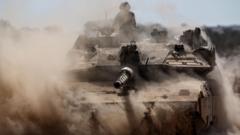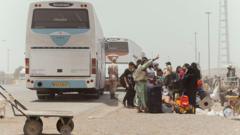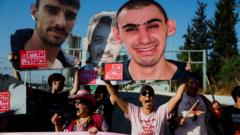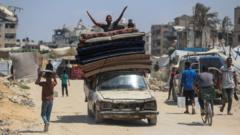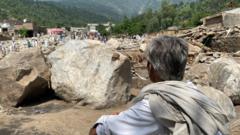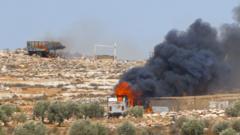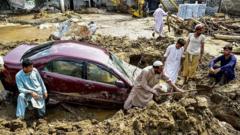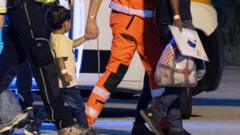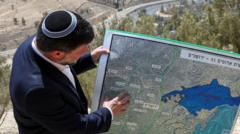In the wake of Israeli airstrikes on Tehran and other Iranian military sites, residents are grappling with fear and chaos while the government struggles to provide adequate responses.
Escalating Tensions: Tehran Faces the Aftermath of Israeli Airstrikes

Escalating Tensions: Tehran Faces the Aftermath of Israeli Airstrikes
Iranian civilians confront uncertainty and devastation following significant Israeli military actions in the capital.
As dawn broke over Tehran on June 13, 2025, residents emerged from a night marked by terror and confusion. Explosions echoed throughout the city as Israeli fighter jets executed a series of attacks targeting critical military installations, including key nuclear facilities and several military bases, spreading panic among civilians.
Long lines formed outside gas stations and grocery stores, with citizens rushing to stock up on supplies in preparation for possible future assaults. Casualties were reported, including numerous civilian deaths, and injuries were widespread, as the government acknowledged but did not specify the exact figures.
The Israeli airstrikes focused on sites such as Natanz, recognized as a pivotal nuclear facility near Isfahan, and the Parchin military base located near Karaj. Eyewitness reports and local media indicated that residential areas, including both affluent and working-class neighborhoods of Tehran, were also impacted by these strikes, which raised questions about the toll on innocent lives.
Despite the warning signs and intelligence suggesting an impending Israeli action, Iranian officials previously downplayed the threats, treating them as exaggerated narratives intended to influence nuclear negotiation strategies with the United States. Following the attacks, the government attempted to calm the populace, yet failed to implement effective shelter recommendations or safety protocols for further potential strikes.
As Iran moves forward, the psychological and practical implications of this conflict challenge the resilience of its citizens, leaving them in a state of anxiety and uncertainty.
Long lines formed outside gas stations and grocery stores, with citizens rushing to stock up on supplies in preparation for possible future assaults. Casualties were reported, including numerous civilian deaths, and injuries were widespread, as the government acknowledged but did not specify the exact figures.
The Israeli airstrikes focused on sites such as Natanz, recognized as a pivotal nuclear facility near Isfahan, and the Parchin military base located near Karaj. Eyewitness reports and local media indicated that residential areas, including both affluent and working-class neighborhoods of Tehran, were also impacted by these strikes, which raised questions about the toll on innocent lives.
Despite the warning signs and intelligence suggesting an impending Israeli action, Iranian officials previously downplayed the threats, treating them as exaggerated narratives intended to influence nuclear negotiation strategies with the United States. Following the attacks, the government attempted to calm the populace, yet failed to implement effective shelter recommendations or safety protocols for further potential strikes.
As Iran moves forward, the psychological and practical implications of this conflict challenge the resilience of its citizens, leaving them in a state of anxiety and uncertainty.

